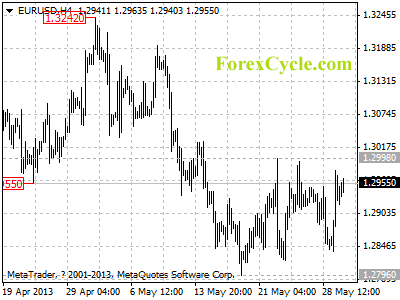The International Monetary Fund (IMF) has officially lowered its growth expectation for the Chinese economy, the second-biggest engine in the global economy. The IMF expects China to grow 7.75% this year compared to the eight percent it previously projected.
The First Deputy Managing Director of IMF, David Lipton, said, “while china still has significant policy space and financial capacity to maintain stability even in the face of adverse shocks, the margins of safety are narrowing.” (Source: “IMF Forecasts Lower China Growth, Warns on Debt,” Wall Street Journal, May 29, 2013.) This will be the first year since 2009 that China’s economic growth is in the single digits.
France, a key economy in the eurozone and the fifth-biggest in the global economy, is back in a recession for the third time in five years, as the economic slowdown in the country continues to take its toll. In May, consumer sentiment in the French economy reached lows not seen since July of 2008. (Source: France 24, May 28, 2013.)
As I have written before, there is no way the economic slowdown in the global economy will not end up affecting America. The price action in the stock market doesn’t show this, but in the first quarter of 2013, of the 11 companies on the Dow Jones Industrial Average that reported their revenues in Europe, nine of them posted a decline in sales from that region! (Source: FactSet, May 28, 2013.)
Dear reader, while the U.S. economy still hasn’t recovered from the last economic slowdown, more troubles from outside our domestic control lie ahead.
China and France are just a few of the many examples of what’s actually happening in the global economy. Other nations like Japan are facing severe scrutiny as well.
There are several countries in the eurozone that are in an outright depression. The youth unemployment rate in some eurozone countries is close to 50%. In Cyprus, the government has gone so far as to take money right out of its citizens’ bank accounts if their deposits totaled over 100,000 euros.
While you don’t read or hear as much about it as you did last year, the economic issues in the eurozone are dire—and the ramifications for the global economy are very real. Should Germany’s economy soften further, we could see all of Europe come under economic pressure, the winds of which will surely sail across the Atlantic to the West.
What He Said:
“Even the most novice investor can now read the chart of the Dow Jones U.S. Home Construction Index and see that it is trading at its lowest level in five years. If, like me, you believe that stocks are an indication of what lies ahead, this important index is telling us housing prices are headed to 2002 levels! What would that do to the economy? Such an event would devastate the U.S.” Michael Lombardi in Profit Confidential, December 4, 2007. That devastation started happening in the first quarter of 2008.
Article by profitconfidential.com



